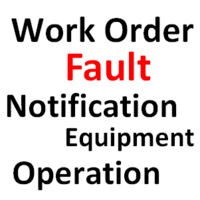In our world of near ubiquitous connectivity, the competitive arena in many industries has moved from the physical to the digital, and from the tempo-of-old to the tempo-of-the-new. The word tempo means the rate or pace of activity (aka, business operations). Any IT decision made today should consider how different options and choices will impact today's and the future's tempo of operations. Can and will the solution you choose support tomorrow's required tempo of business?
 In many countries in Latin America new and emerging e-invoicing requirements have been passed by national tax authorities. In some countries today, the seller of a product needs to electronically record a sale/invoice (in real-time) with the tax authority before a product can be delivered. The tax authority issues a real-time unique transaction code to be attached to the invoice number. Once the product is delivered, the buyer electronically acknowledges receipt (in real-time) with the national tax authority, and the process is closed and documented with the tax authority. If a product is found to be sold and delivered outside of this real-time electronic reporting system, stiff penalties will be applied.
In many countries in Latin America new and emerging e-invoicing requirements have been passed by national tax authorities. In some countries today, the seller of a product needs to electronically record a sale/invoice (in real-time) with the tax authority before a product can be delivered. The tax authority issues a real-time unique transaction code to be attached to the invoice number. Once the product is delivered, the buyer electronically acknowledges receipt (in real-time) with the national tax authority, and the process is closed and documented with the tax authority. If a product is found to be sold and delivered outside of this real-time electronic reporting system, stiff penalties will be applied. These e-invoicing systems are designed to document and make visible transactions in real-time for tax collection purposes. This process requires an entirely new and faster tempo than most companies are currently prepared to support. This is but one example of how the tempo of business is being impacted by digital transformations.
Today, companies are looking seriously at cloud computing solutions and SaaS (software-as-a-service) options in increasing numbers for the purpose of improving the operational tempo of their IT environment. If you instigate a global five-year ERP implementation plan today, your business will likely be unrecognizable by the time the implementation is completed. This means your ERP implementation will likely be misaligned with the new and different demands of your market and industry.
Every aspect of your IT environment must be evaluated today in the context of tempo. What tempo will each solution and integration methodology support? Will my enterprise mobile strategy support the tempo of change and evolution of the devices, networks and apps my target customers want? Can I keep pace with the demands of my market?
It is critical that enterprises today evaluate themselves in a brutally honest manner and identify weaknesses that drag down operational tempo. These limitations will have an increasingly negative impact on bottom lines as the operation tempo of your market and competition increases.
*************************************************************
Kevin Benedict,
Head Analyst for Social, Mobile, Analytics and Cloud (SMAC)
Cognizant
View Linkedin Profile
Learn about mobile strategies at MobileEnterpriseStrategies.com
Follow me on Twitter @krbenedict
Join the Linkedin Group Strategic Enterprise Mobility
***Full Disclosure: These are my personal opinions. No company is silly enough to claim them. I am a mobility and SMAC analyst, consultant and writer. I work with and have worked with many of the companies mentioned in my articles.







